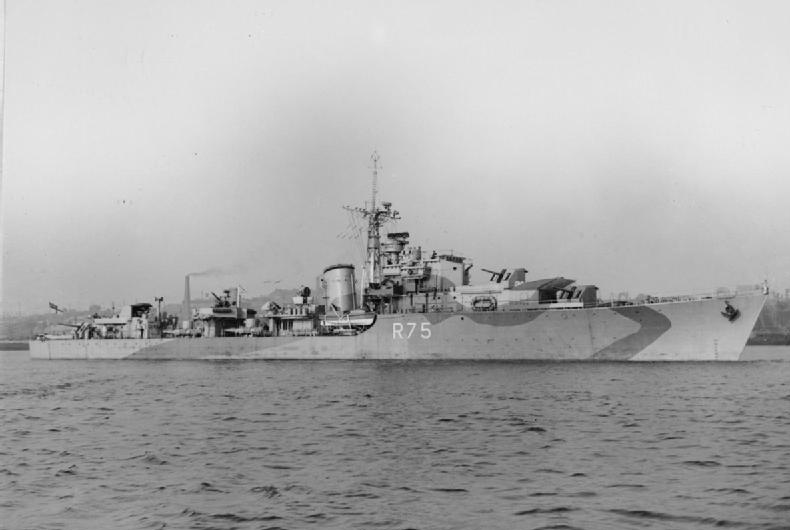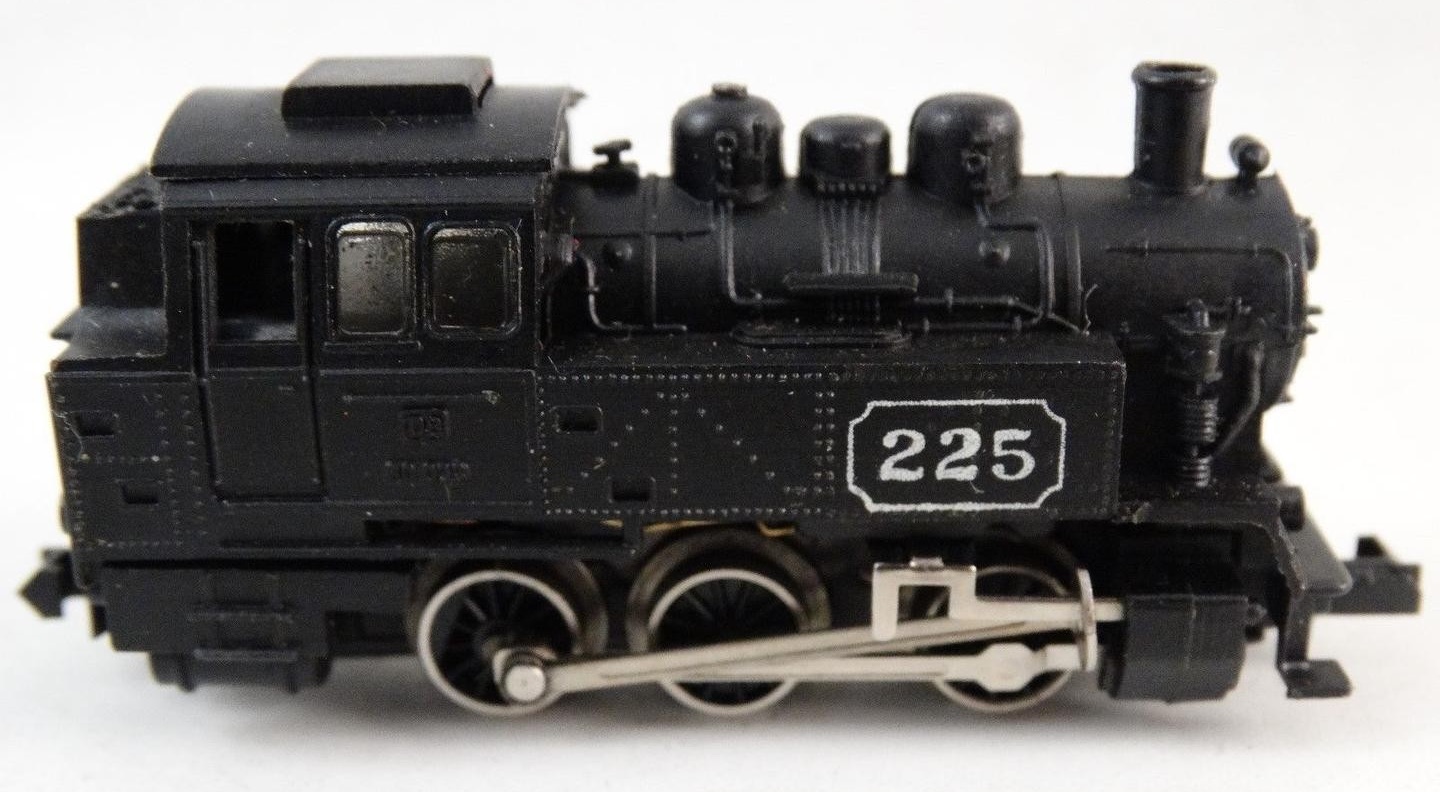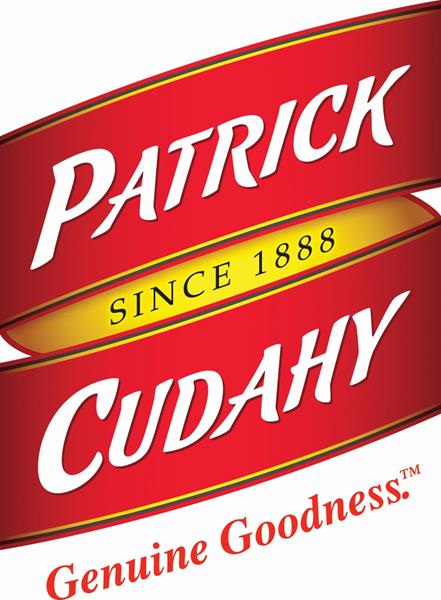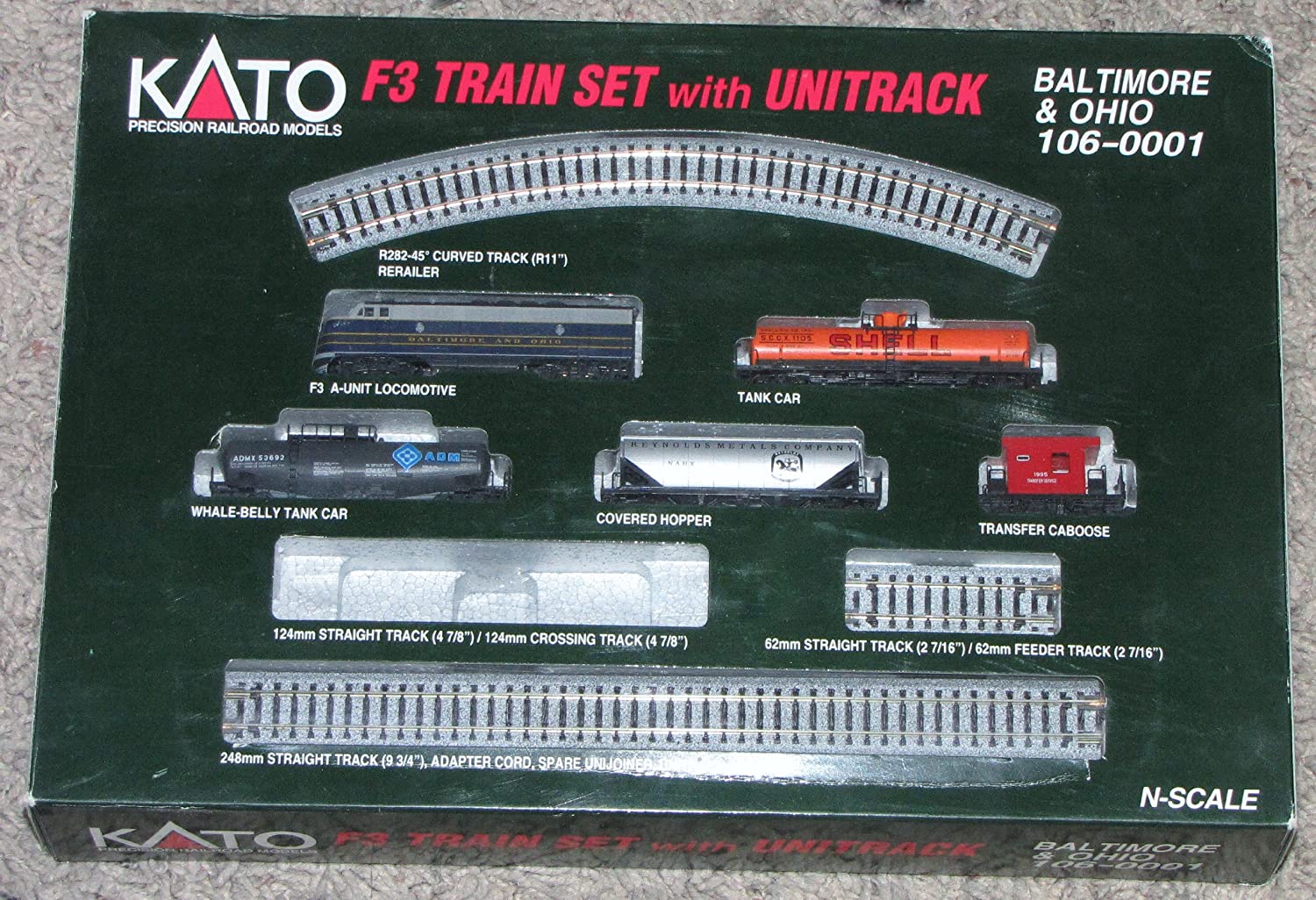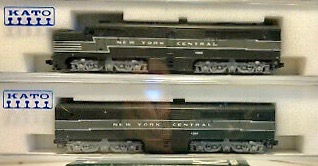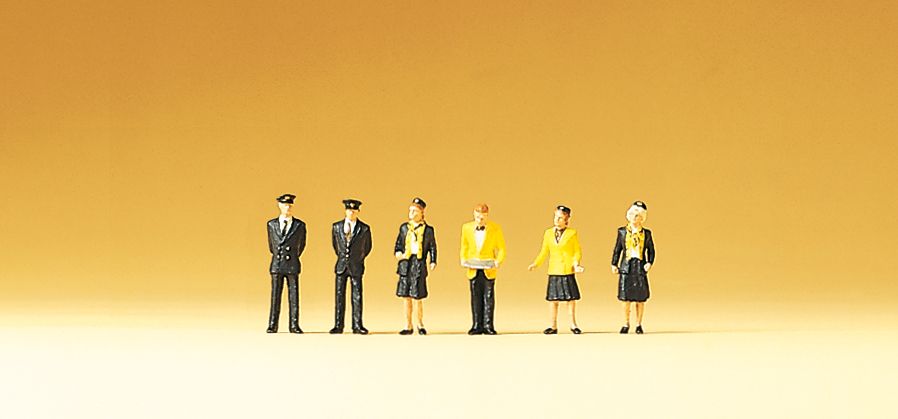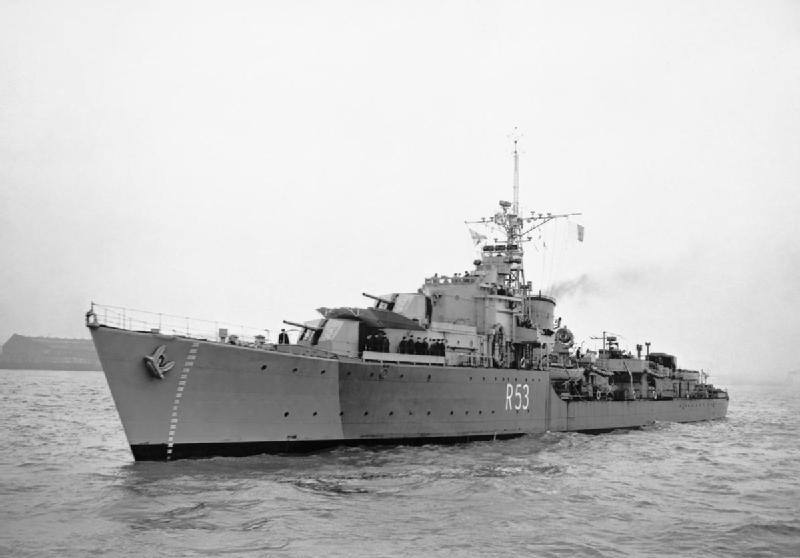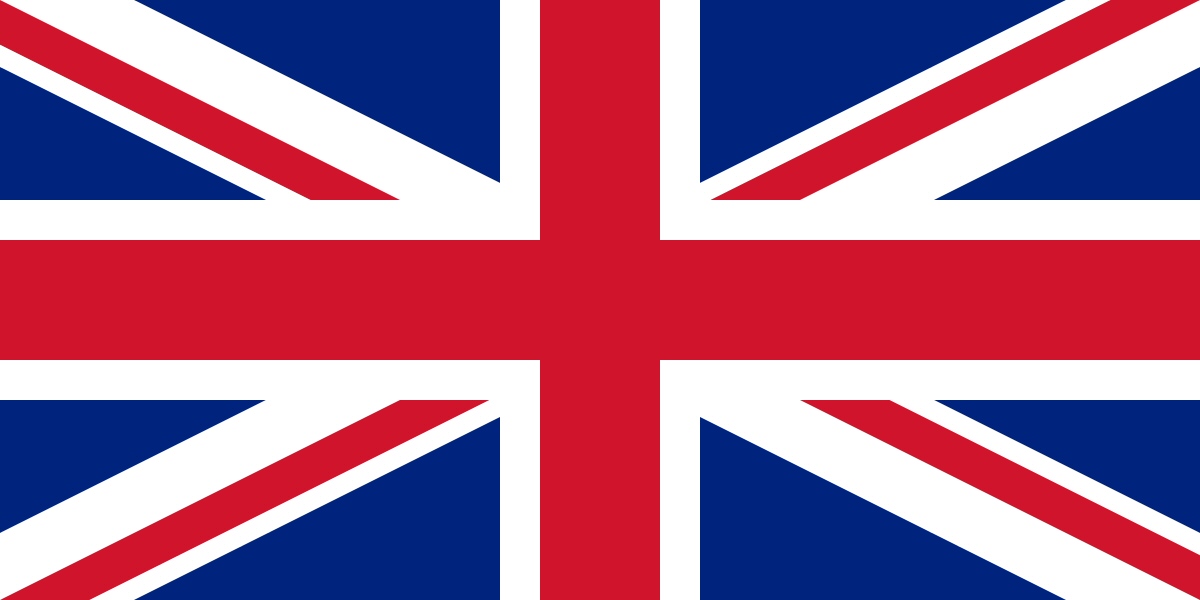History: HMS Virago was a V-class destroyer of the British Royal Navy that saw service during World War II. She was later converted into a Type 15 fast anti-submarine frigate, with the new pennant number F76.
In addition to escorting the perilous Arctic convoys during 1943-44, Virago participated with other British destroyers in the Battle of North Cape on 26 December 1943, where her torpedoes helped sink the badly beaten German battleship Scharnhorst, following a fierce fight between the Germans and the battleship Duke of York.[1] On January 30, 1944, while escorting Convoy JW 56B to Murmansk, Virago rescued 78 men from the stricken HMS Hardy, whose stern had been blown off by an acoustic torpedo (resulting in 35 casualties). Following a bow collision between the two ships, Virago disengaged and HMS Venus rescued the rest of the crew and her officers (and then scuttled Hardy). On April 3, 1944 Virago escorted the carrier HMS Searcher during Operation Tungsten, which was an inconclusive air attack on the German battleship Tirpitz at her base in Kaafjord in the far north of Norway.
In addition to escorting the perilous Arctic convoys during 1943-44, Virago participated with other British destroyers in the Battle of North Cape on 26 December 1943, where her torpedoes helped sink the badly beaten German battleship Scharnhorst, following a fierce fight between the Germans and the battleship Duke of York.[1] On January 30, 1944, while escorting Convoy JW 56B to Murmansk, Virago rescued 78 men from the stricken HMS Hardy, whose stern had been blown off by an acoustic torpedo (resulting in 35 casualties). Following a bow collision between the two ships, Virago disengaged and HMS Venus rescued the rest of the crew and her officers (and then scuttled Hardy). On April 3, 1944 Virago escorted the carrier HMS Searcher during Operation Tungsten, which was an inconclusive air attack on the German battleship Tirpitz at her base in Kaafjord in the far north of Norway.
Class: The U and V class was a class of sixteen destroyers of the Royal Navy launched in 1942–1943. They were constructed in two flotillas, each with names beginning with "U-" or "V-" (although there was a return to the pre-war practice of naming the designated flotilla leader after a famous naval figure from history to honour the lost ships Grenville and Hardy). The flotillas constituted the 7th Emergency Flotilla and 8th Emergency Flotilla, built under the War Emergency Programme. These ships used the Fuze Keeping Clock HA Fire Control Computer.
Nationality: The United Kingdom, made up of England, Scotland, Wales and Northern Ireland, is an island nation in northwestern Europe. England – birthplace of Shakespeare and The Beatles – is home to the capital, London, a globally influential centre of finance and culture. England is also site of Neolithic Stonehenge, Bath’s Roman spa and centuries-old universities at Oxford and Cambridge.
Item created by: gdm on 2019-04-08 18:34:57
If you see errors or missing data in this entry, please feel free to log in and edit it. Anyone with a Gmail account can log in instantly.
If you see errors or missing data in this entry, please feel free to log in and edit it. Anyone with a Gmail account can log in instantly.


